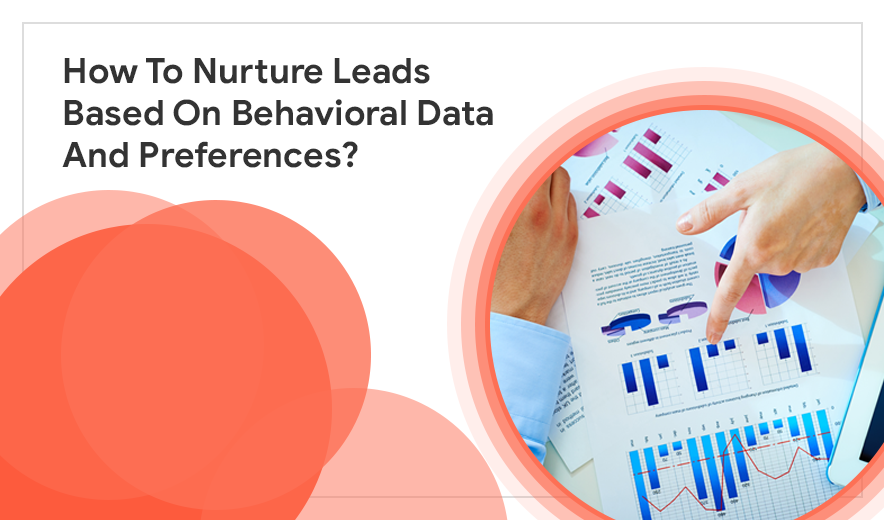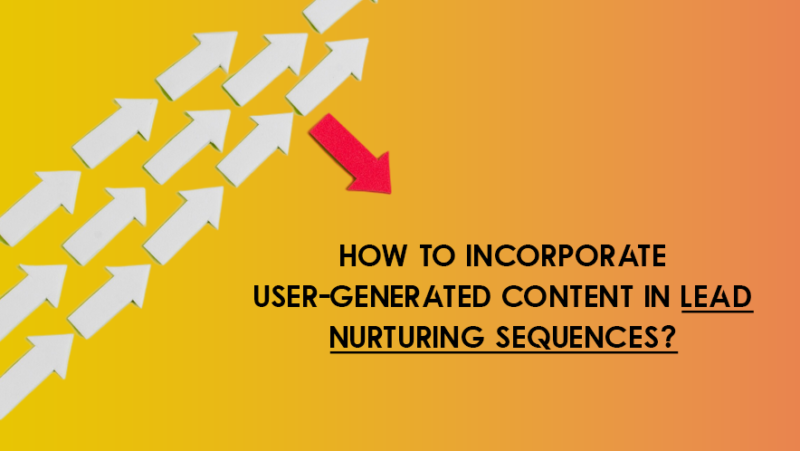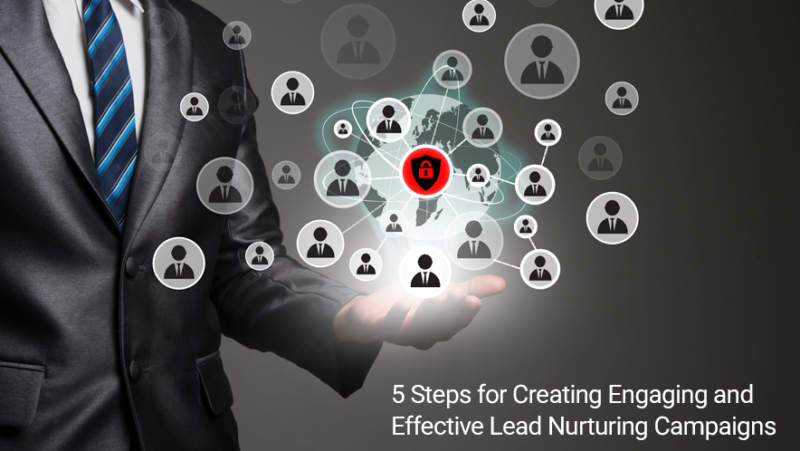Building relationships with your customers is the key to success in today’s business world. Lead nurturing is a vital strategy for achieving your business goals. The process involves guiding potential buyers through the sales funnel with personalized engagement. However, personalizing communication isn’t simple.
Customer preferences change quickly, so communication must be hyper-personalized. Emails and content that don’t resonate with customers fail to make an impact. Behavioral data plays a key role in personalized communication. Based on behavioral data, you can optimize your lead nurturing process to deliver personalized and impactful content to prospects.
What is Behavioral Data?
Behavioral data is the set of insights that point to prospects’ actions, interactions, and preferences across various channels like websites, social media, and emails. The behavioral data includes information on visited pages, time spent, downloaded content, clicked links, filled forms, provided feedback, etc.
This data can reveal prospects’ interests, pain points, motivations, and purchasing readiness. Analyzing and segmenting behavioral data can help you optimize lead nurturing strategies for prospects at each stage of the sales cycle.
The following are a few types of behavioral data:
- Website Behavior: Insights from visited pages, time spent, and interactions help measure users’ interests and engagement levels.
- Social Media Engagement: Metrics including likes, shares, and clicks provide valuable data on content resonance and audience demographics.
- Email Interaction: Analyzing open rates, click-through rates, and responses refines email marketing strategies and reveals subscriber preferences.
- Content Consumption: Metrics such as content views, downloads, and time spent per piece of content offer insights into the effectiveness and audience preferences.
- Search Behavior: Understanding how people search online can give us important information about what they want to know and what interests them.
- Purchase Behavior: Data on product views, cart additions, and purchases helps optimize the conversion funnel and customize marketing strategies.
- App Usage: Metrics like app opens, session duration, and in-app purchases reveal the data on user engagement levels and app performance.
- Event Attendance: Tracking registrations, attendance, and interactions with event materials helps measure event success and attendee interests.
The Importance of Lead Nurturing with Behavioral Data
Lead nurturing is crucial for turning potential customers into loyal ones. By providing personalized information based on individual needs, businesses can build loyalty. Using behavioral data during lead nurturing can boost conversion rates and drive more sales. According to Hubspot, effective lead nurturing programs can reduce the cost of generating sales-ready leads by 33%.
Personalization Benefits: A Game-Changer in Lead Nurturing
Personalization using behavioral data can enhance lead nurturing by delivering insights into individual preferences and behaviors. This approach can drive engagement and close more deals. As consumers expect more personalized offers, businesses are prioritizing behavioral data extraction to gain a competitive advantage.
Here are the benefits of lead nurture campaigns based on behavioral data.
- Improved Engagement and Conversion Rates: Personalized communication yields tangible results.
- Enhanced Customer Experience: 91% of consumers prefer brands that offer personalized deals and recommendations (Accenture). This kind of communication can significantly enhance customer experience.
- Increased ROI: 88% of marketers report measurable improvements in business results from personalization, according to a survey by Evergage. Therefore, lead nurturing can help you generate the ROI for your campaigns.
- Addressing Cart Abandonment: For e-commerce enterprises, cart abandonment is a significant challenge. However, personalized abandonment emails have higher open and click-through rates, helping to reduce this problem
How To Optimize Lead Nurture Process with Behavioral Data?
Segmentation based on behavioral data collection and analysis allows for targeted messaging. It can ensure your email content resonates with each audience segment. Dynamic content can deliver personalized experiences in real-time and adapt to changing customer preferences. Marketing automation streamlines this process, by deploying personalized messages at scale based on lead behavior.
To create a personalized approach for prospects, follow these steps:
- Data Collection and Analysis: Effective personalization starts with data analytics. This helps businesses gather insights into customer behavior and preferences.
- Segmentation: Segment leads based on common attributes for better-targeted messaging. The process involves identifying and grouping prospects based on shared interests.
What Is The Role of Personalization in Lead Nurturing?
Businesses can meet customer needs and deliver hyper-personalized experiences by using advanced analytics and segmentation. Dynamic content and marketing automation further optimize the process to ensure effective communication and increased customer satisfaction rates. The following are the major benefits of behavioral data in lead nurturing:
- Dynamic Content: Dynamic content allows businesses to deliver tailored messages in real-time.
- Marketing Automation: Automation tools streamline the personalization process. They enable businesses to send customized messages at scale and nurture leads effectively.
Instead of average interactions, businesses now deliver exceptional experiences tailored to individual preferences. Organizations can build deeper connections with their target audience by combining creativity, data analytics, and personalized elements into marketing strategies. Embracing hyper-personalization optimizes customer engagement and satisfaction, ultimately driving long-term success.
Collection and Analysis of Behavioral Data: How to do it effectively?
You can use various tools to gather and analyze behavioral data, such as web analytics, CRM (Customer Relationship Management), marketing automation, and lead scoring. These tools help track, store, and organize behavioral data.
Each tool has its perks. These are as follows:
- Web Analytics Tools: Reveals the most engaging pages or topics.
- CRM Software: Stores contact details and interaction history.
- Marketing Automation Software: Enables personalized email campaigns based on actions.
- Lead Scoring Tools: Assigns numerical values based on lead behavior and suitability.
Challenges in Personalizing You Lead Nurturing Process
While personalization offers immense potential, it also presents challenges related to regulatory frameworks and privacy concerns. Businesses need to balance customization and privacy to comply with data protection regulations such as GDPR and CCPA.
The Future of Personalization
Advancements in technology, especially in artificial intelligence and machine learning, are poised to revolutionize the personalization landscape. By harnessing AI algorithms, businesses can anticipate customer needs with unprecedented accuracy, driving enhanced engagement and conversion.
Additionally, the rise of voice search and smart devices presents novel avenues for personalized interactions, empowering businesses to deliver seamless, contextually relevant experiences across diverse touchpoints.
In A Nutshell
Personalization is essential for effective lead nurturing today. By using data-driven insights and cutting-edge technology, businesses can forge meaningful connections with prospects, driving higher engagement, conversion, and brand loyalty. As the personalization landscape evolves, embracing innovation and prioritizing consumer privacy will be imperative to achieve sustainable growth.
Share Your Views
Did we miss something? If we did, please leave a comment below to let us know what could have been better. Also, we would love to know your thoughts on utilizing behavioral data to nurture leads for the long term.
What’s Next?
Become a member of our MarTech Pulse Community for free and tap into a pool of valuable resources, the latest trends, and innovative technologies shared by industry experts. Check out other blogs here.





